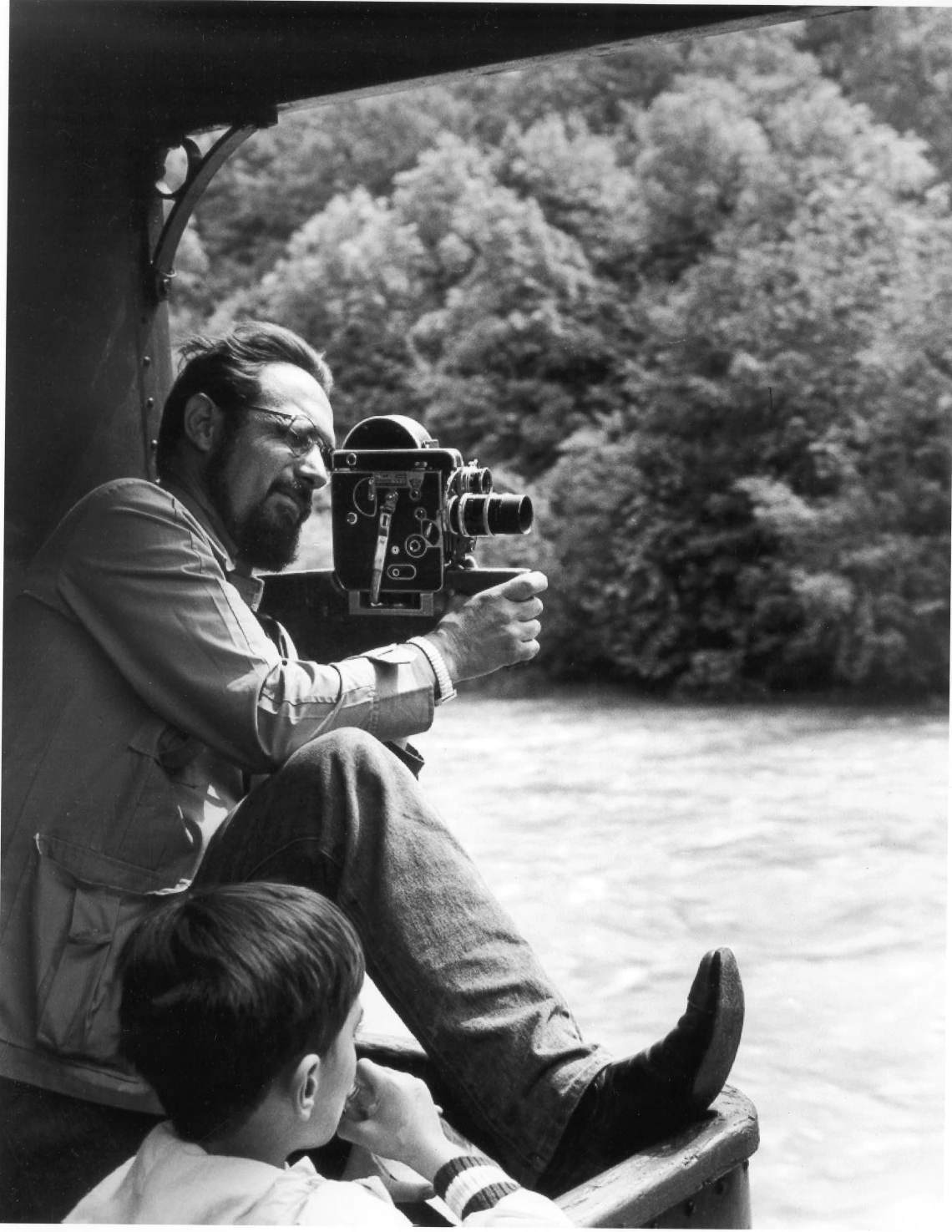Ken Wolfgang collection

Filming on a Narrow Gauge Train in Austria, 1979
Collection dates: 1659-2010 bulk (bulk 1957-1993)
Ken Wolfgang collection, 1659-2010 (bulk 1957-1993). This collection is comprised of the travelogue films and photographs produced by Ken Wolfgang and related materials including film production and promotional materials, correspondence, cultural artifacts, and ephemera. The bulk of the collection relates to his career as a director of travelogue films produced by his own film company, Kensharo Productions based in Sonoita, Arizona. The collection includes completed versions of his films, excess and outtake footage, audio, as well as photographic materials produced while filming on location. The travelogue films Ken Wolfgang produced were renowned for their realistic depictions of cultures from a myriad of regions including Mexico, Austria, India, and Japan. The films documented ordinary citizens engaged in their daily lives using the cinema verite technique. Also included in the collection are photographic materials including scrapbooks which contain ephemera such as film promotional materials, newspaper articles and reviews concerning his films, correspondence discussing the production of his films, and paper production materials such as shot lists, scripts, and production diaries. The collection consists primarily of 16mm Kodachrome film that contains no audio but also included in the collection are color and black and white photographic materials, audio materials, promotional paper materials, film production documents, correspondence, and artifacts such as Japanese dolls, ceremonial clothing, and Samurai swords. The collection also contains non travelogue film photographic material shot by Ken Wolfgang including photographic albums documenting various locations around Japan, Austria, Mexico, and Arizona as well as photographic material documenting family and personal history. The Collection also contains research and publication materials from Tucson Then and Now, a manuscript produced by Ken Wolfgang and his wife Dr. Kendra Gaines documenting the history of the Tucson, Arizona region. These materials consist of photographs, newspaper articles, and literature documenting the early history of Tucson, Arizona as well as several manuscripts of Tucson Then and Now.
Ken Wolfgang was born in Toledo, Ohio in 1931. At the age of twelve he taught himself photography which led to his interest in crafting motion pictures. In 1951 at the age of 20, he enlisted in the military which deployed him to Japan. It was here, while walking the streets of Japan, that he had a revelation that the Japanese people were just like him and the people that he loved at home in Ohio. He decided to shun preconceived notions he held of Japanese culture which were prevalent among post World War II Americans. Wolfgang made it his purpose in life to use his gift of filmmaking to create documentary films that depicted cultures accurately, without reinforcing the negative stereotypes that were pervasive in American culture at the time. He stated that instead of using his camera as a sideline spectator, he tried to film from the cultural perspective of the people being filmed so the viewer could look out and see the world of others through the eyes of those who lived in that world.
Ken Wolfgang formed his own production company named Kensharo Productions in 1958 and in 1964 he and his first wife, Sharon Wolfgang, moved to Sonoíta, Arizona where he made filmmaking his full time career. The full length travelogue films Ken Wolfgang created between the 1950's-1980's document a wide array of cultures from nations including Mexico, Thailand, Japan, India, Singapore and Austria. The goal of his films was to document unfamiliar details of a culture. He sought to avoid traditional tourist highlights and instead, to offer insightful perspectives into the lives of the film's subjects. To achieve this, he gained unprecedented access into the daily lives of people from cultures that had previously shunned foreigners. He immersed himself in their lives and engaging in their daily activities such as farming, cooking, and construction. He often spent months with them without a camera to gain their friendship and trust. He aimed to make films that were authentic and that would document the real life events of his subjects as they actually occurred. His films succeed in capturing the point of view of the subjects rather that his own. In his films, Wolfgang refused to stage shots and employed a straightforward, personal approach towards documenting his subjects while using minimal artificial lighting. Wolfgang presented his films throughout the country on the United States travel film lecture circuit where he narrated his films to large audiences as the film was projected in the auditoriums.
Some of Wolfgang's films like Soul of Japan were picked up by major distributors like Walt Disney and National Geographic. This increased his exposure to wider audiences and gained notoriety for his films. In 1970, Wolfgang was awarded the Cine Film Festival Golden Eagle Award, considered to be the highest award given for a non-theatrical film produced in the United States, for his film The Japanese Sword as Soul of the Samurai. In 1983, Wolfgang retired from filmmaking, citing that the popularity of travel shows on cable and technology of filmmaking had begun to trump the human connection to the work. Ken Wolfgang died on September 23, 2011 at the age of 80 and is survived by his second wife Dr Kendra Gaines and son Glenn.
A collection guide explains what's in a collection. New to using our collections? Learn how to use a collection guide.
Collection guideAccess this collection
Visit us in person to access materials from this collection. Our materials are one-of-a-kind and require special care, so they can’t be checked out or taken home.
How to cite
Learn how to cite and use materials from Special Collections in your research.
